
An inverter is a device that converts direct current into alternating current and is widely used in various fields. The digital and intelligent development of photovoltaic power plants has become an inevitable trend in its development.
As a core component with extremely intelligent characteristics in the entire photovoltaic industry chain, the inverter is the only photovoltaic system that has multiple digital functions and is directly connected to the power grid. This article will introduce the 10 applications of inverter and the commonly used communication technologies for inverters.
Main content:
1. Application scenarios of different types of inverters
Photovoltaic inverters are mainly divided into centralized inverters, string inverters and micro-inverters.
- Centralized inverter:
With mature technology, small number of inverters and components, there are few failure points, and high reliability. However, the total power is greatly affected by individual solar cells, which requires a large space to arrange the inverter, and the maintenance is more complicated and the total cost is high.
Applications of inverter centralized: Generally used in large power generation systems such as desert power stations and ground power stations.
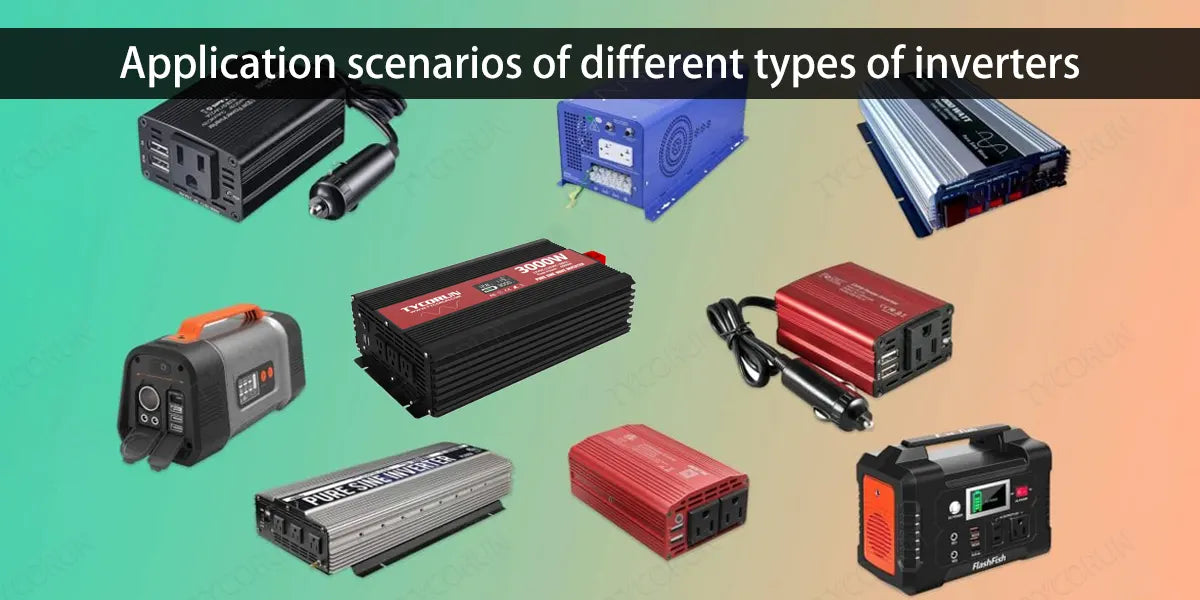
- String inverter
This inverter is small in size, light in weight and easy to install, and can maximize the power generation. However, for this kind of inverter system, there are many inverters and many electronic components needed, so the total failure rate is relatively high.
Applications of inverter in string: Suitable for smaller centralized power stations, and rooftop photovoltaic systems, etc.
- Micro-inverter:
Easy to install, safe to maximize power generation. But the price is higher and the scope of application is small.
Applications of inverter micro: Distributed household rooftop power station.
Judging from the current market situation, the market share of micro-inverters is small, and centralized inverters were the first choice in the early stages of photovoltaic development. Due to the limitations of inconvenient installation and high total cost, the applications of inverter of these kinds are not growing as fast as before. String inverters are favored by users due to their low price and easy installation, and their market share continues to increase. According to statistics, it is expected to increase to 48% by 2025.
2. 10 applications of inverter
Here are the 10 common applications of inverter:
① Solar power systems:
As the demand for renewable energy continues to increase, solar wall wart power supply is a popular energy option. Inverters play a key role in solar power systems by converting DC power collected through solar panels into AC power for use in homes, industries and commercial equipment. Inverters ensure power quality and provide reliable power supply.
② Household appliances:
Suitable for small households, especially rural areas, plateaus, mountains, islands, pastoral areas, border posts and other areas far away from the power grid or underdeveloped power grid for military and civilian life. With these applications of inverter, there is no need to be integrated into the power grid, which effectively solving the basic life of military and civilians in areas without electricity.
Inverters are also widely used from air conditioners and washing machines to televisions and refrigerators, these home appliances often require AC power to function properly. The inverter can convert the DC power of the home power supply into the required AC power and ensure its stable power supply to meet the various electrical needs of the home.
③ Solar street lights:
The battery converts DC power into AC power through the inverter and transports it to the distribution cabinet, which is powered by the switching function of the distribution cabinet. The installation of solar street lights is simple and convenient, and the maintenance cost is low. Solar street lights use solar photovoltaic cells to provide electrical energy. Making full use of solar resources has positive significance in alleviating the shortage of conventional energy sources. For the best batteries that work with inverter, you can check battery stores near me.
④ Outdoor lighting:
In outdoor activities, power supply is mainly used for digital electrical products such as lighting, fans, televisions, and mobile phones. The solar power generation system adopts a portable design and has the characteristics of small size, light weight, high performance, strong practicality, and durability.
⑤ Solar transportation:
Installing solar power generation systems to provide electricity guarantee for mobile RVs, ships and other transportation vehicles. Use solar panels to absorb sunlight, charge the reserve battery, and then convert it into AC power for daily use through the inverter.
The system has a simple structure, is easy to install and transport, and there is no pollution, no noise, and is safe to operate. The solar power supply system is stable and reliable, and inverters like TYCORUN power inverter 3000w or power inverter 2000w can meet the requirements of electricity consumption anytime and anywhere.
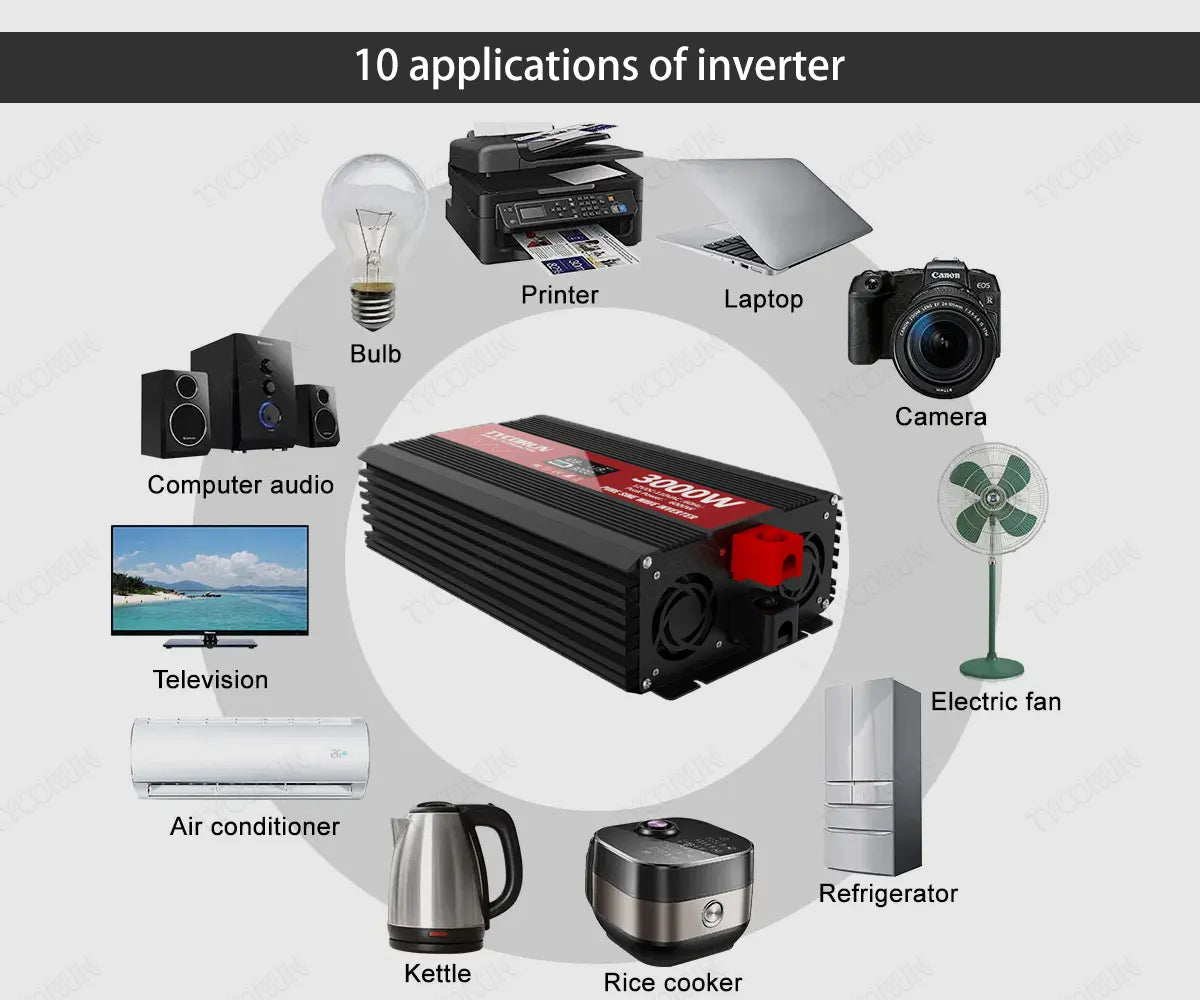
⑥ Wind power:
Wind power is another important form of renewable energy, in which the applications of inverter also play an important role. The electricity produced by wind turbines is direct current, but most power systems require alternating current. By applications of inverter, the direct current generated by wind power can be converted into alternating current to meet the needs of the grid. Inverters also play a key role in stabilizing power output and system monitoring.
⑦ Electric vehicles and hybrid vehicles:
Electric vehicles and hybrid vehicles are becoming increasingly popular as the demand for eco-friendly transportation increases. The role of the inverter in these vehicles is to convert the DC power in the LFP battery into AC power to run the electric motor. Inverters have a significant impact on the performance and efficiency of electric and hybrid vehicles.
⑧ Electric power industry:
Applications of inverter play a very important role in the electric power industry. They are used to control power quality, stabilize voltage and frequency, and ensure the reliability of power transmission. Inverters can help adjust the output of a power system to suit varying load demands. Inverters can also provide backup power to ensure continuity of power supply during grid failures or other emergencies.
⑨ Agriculture:
Irrigation is a very important task in agricultural production, especially in arid areas where water resources are limited. However, at the same time, the intensity and time of sunshine in arid areas are very high, so it is suitable to use solar power generation systems to complete farm operations efficiently.
Solar panels are used to absorb solar radiation energy, and after being converted by the inverter, it is directly used to provide power for agricultural equipment, so that farm operations are no longer restricted by distance, terrain and power grids, greatly saving agricultural operation costs. It is an ideal combination of economics and green high-tech energy integrating reliability and environmental benefits.
⑩ Information technology:
Inverters are also widely used in the field of information technology. Whether it is servers, network equipment or data centers, they all need stable AC power supply. Inverters can effectively convert DC power into the required AC power and provide constant voltage and frequency to ensure the normal operation of these devices.
3. Commonly used communication technologies for inverters
As the brain of the entire power station, the photovoltaic inverter can transmit the collected power station operation data to the communication hardware. Operation and maintenance personnel or users can view relevant data through the intelligent operation and maintenance platform to realize intelligent management of the power station. So how does the inverter transmit data? What are the different communication methods for the applications of inverter?
- GPRS/4G communication
Generally, each inverter is equipped with a GPRS/4G data collection module. Through the built-in SIM card, the collected data is uploaded to the inverter company's server through the wireless network and the communication base station. This method is easy to use and does not require additional wiring, but traffic charges is needed.
Applications of inverter with GPRS/4G communication: Suitable for medium and large distributed projects and areas with good signal coverage by service providers.
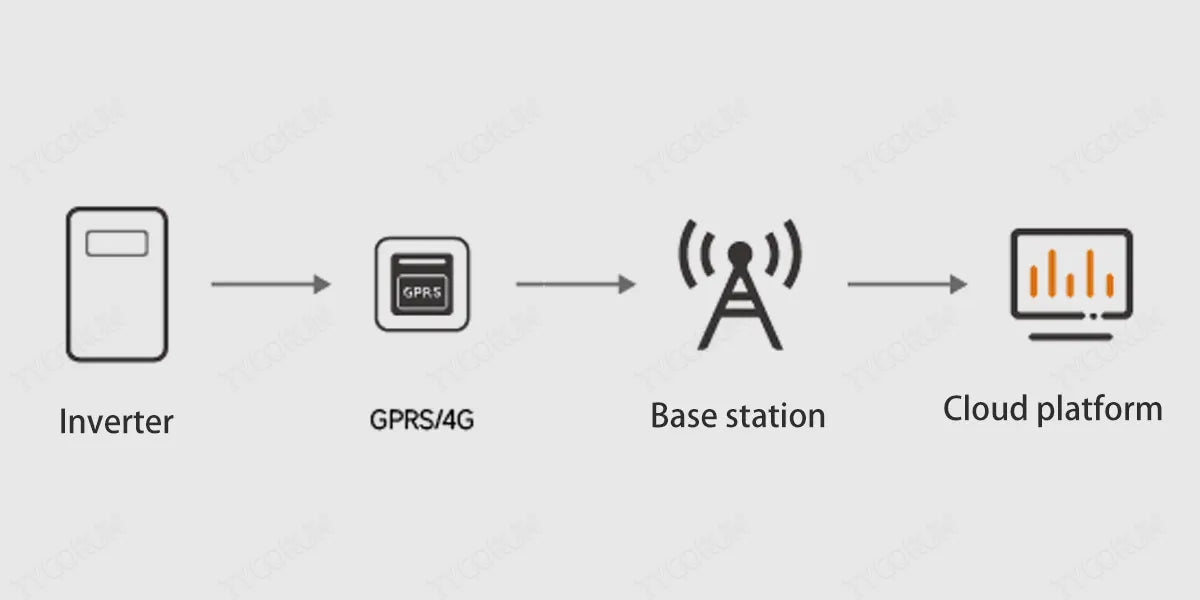
- WiFi communication
Generally, the inverter is connected to the router through a built-in or external WiFi module, and the collected data is transmitted to the inverter company's server. It can also be directly connected to the mobile phone APP through WiFi for data interaction. This method is easy to install and requires no traffic charges, but it requires stable wireless network coverage, so it is greatly affected by external factors such as distance and weather.
Applications of inverter with WiFi communication: Suitable for user or small and medium-sized industrial and commercial systems and areas covered by wireless networks.
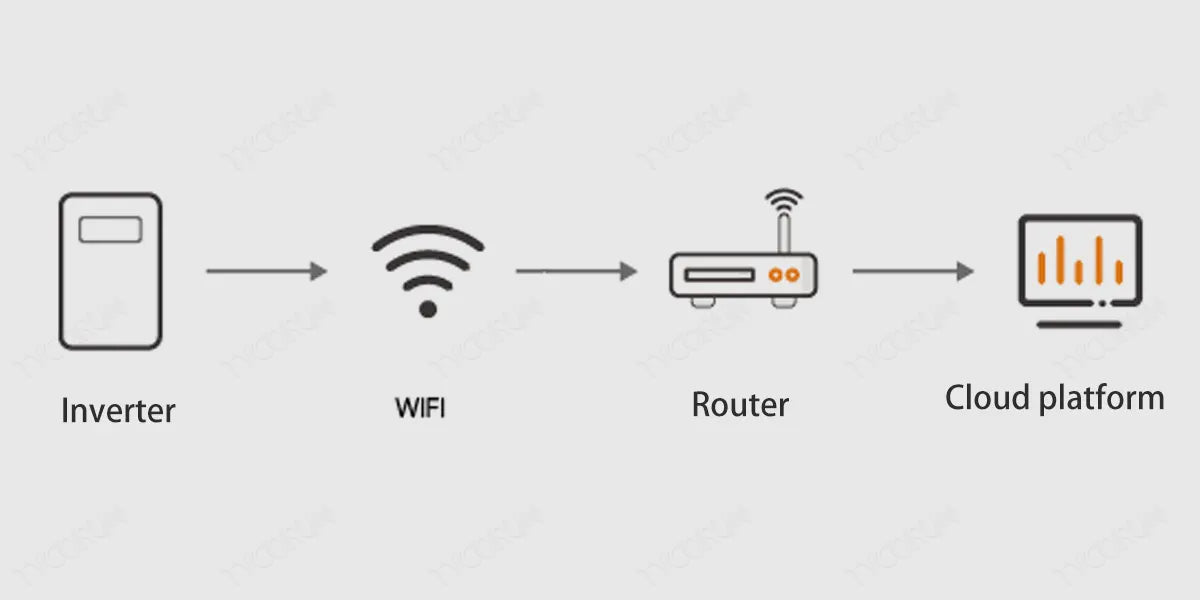
- RS485 communication
After the inverters are connected in series hand in hand through RS485, the end inverter is connected to the data collector, and the data is transmitted to the inverter company's server through the network. This method has strong anti-interference ability and stability, but requires additional laying of communication cables, which increases the cost.
Applications of inverter with RS485 communication: Suitable for medium and large industrial and commercial projects.
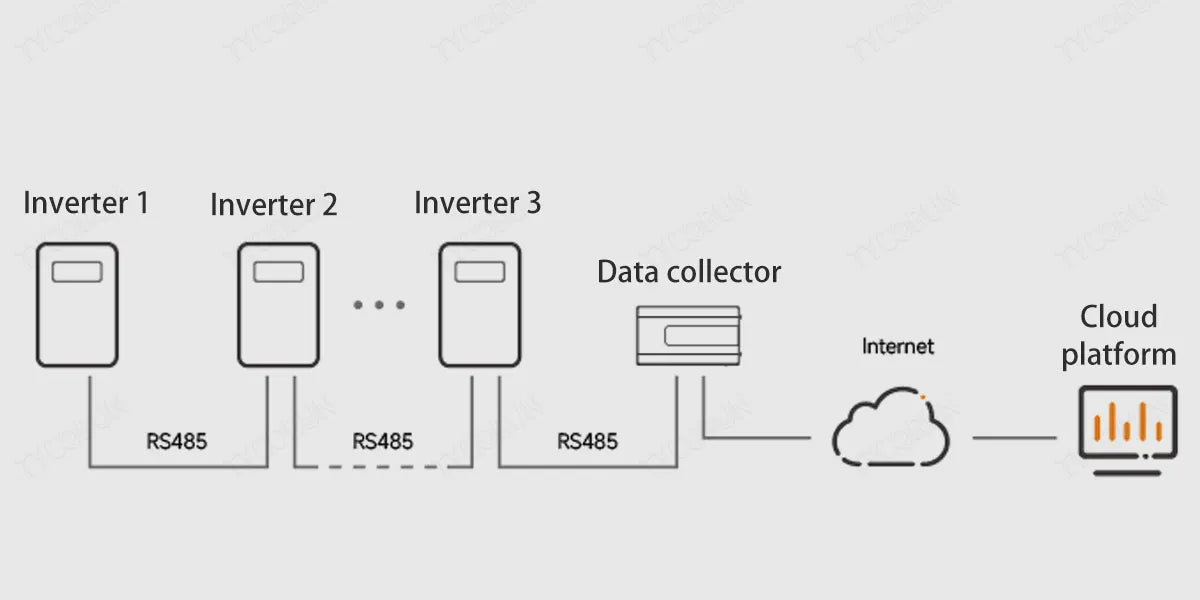
- PLC communication
Power line communications (PLC for short) technology refers to a communication method that uses power cables to transmit data and media signals. The data is transmitted over power lines, aggregated into data collectors, and transmitted over the network to the inverter company's servers. Data transmission is carried out through power cables without the need for additional communication lines. The reliability is high, but the communication rate is low, and the data collector must be connected to the same power loop.
Applications of inverter with PLC communication: Suitable for user or small and medium-sized industrial and commercial systems.
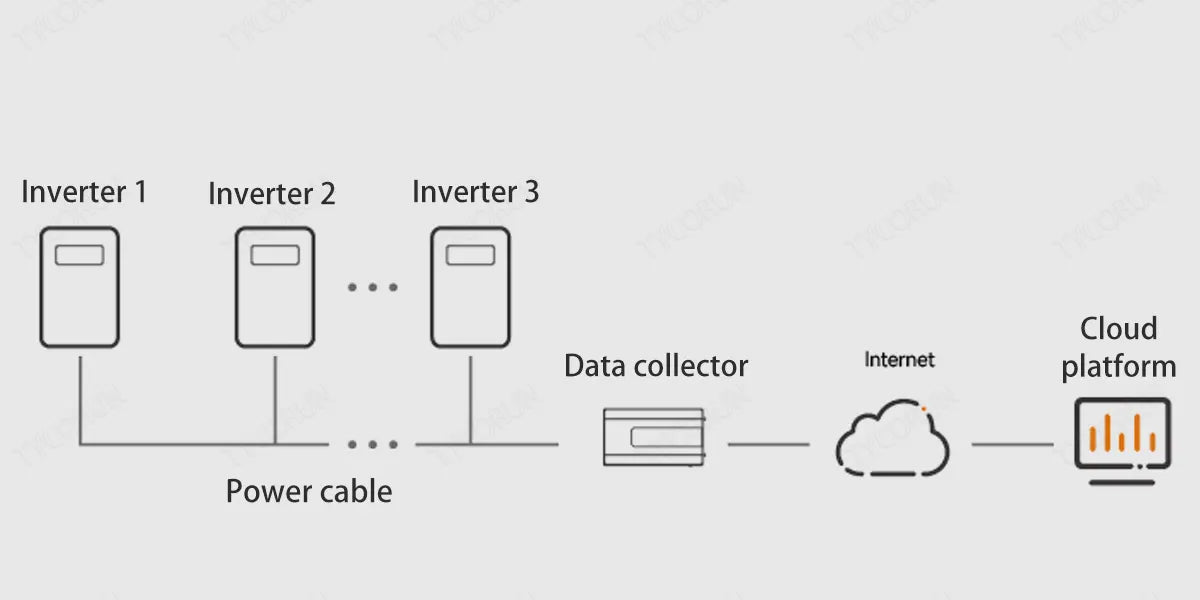
If you want to know more information about Tycorun inverters, please check our 3000w inverter 12v, 2000w inverter 12v, 1000w pure sine wave inverter, 500 watt car inverter.
Related posts: 12 volt 100ah deep cycle lithium battery, Power wheels battery, Top 10 PV inverter companies